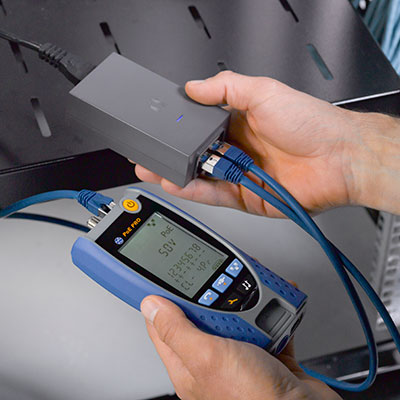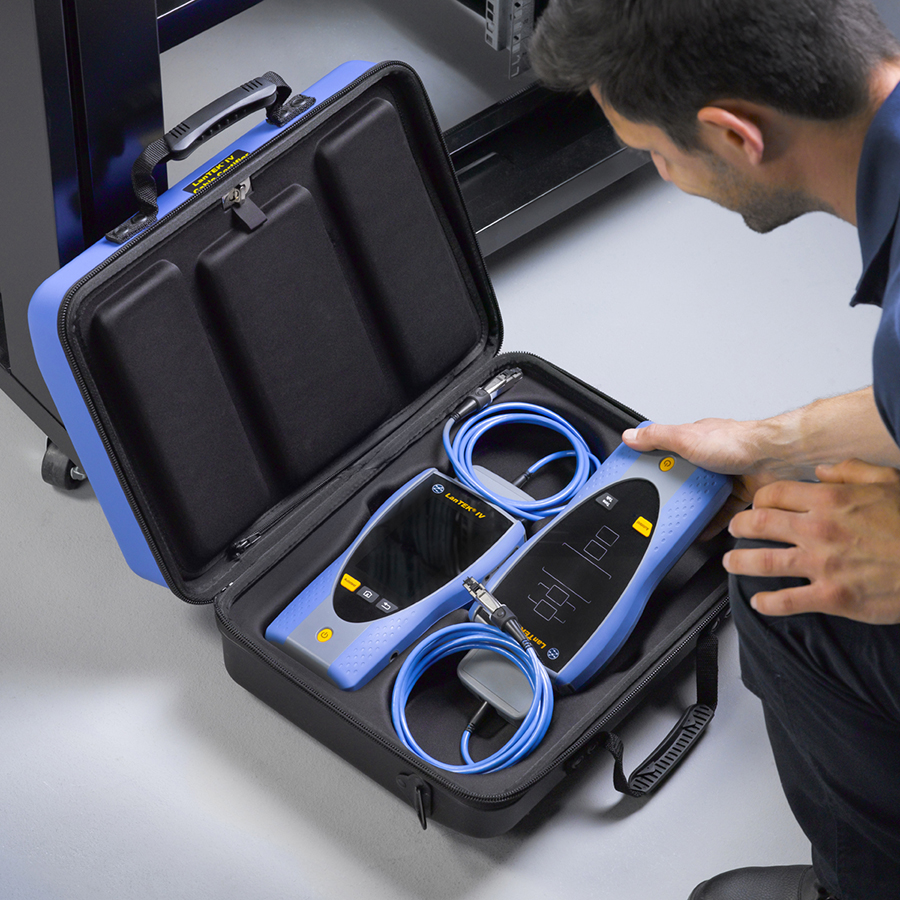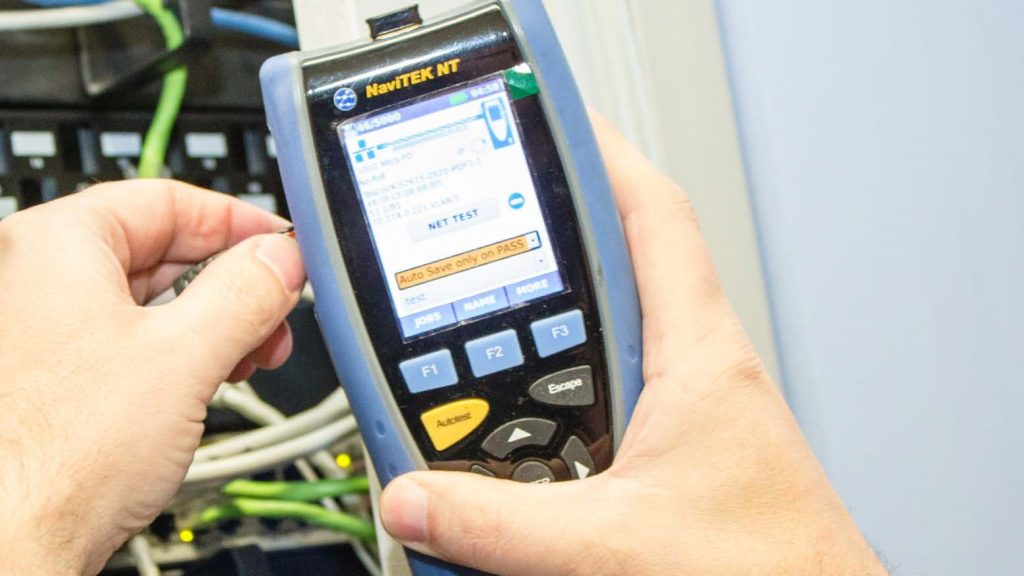PoE testing in Intelligent Lighting installations – 4 things you need to know
Power over Ethernet (PoE) no longer only supports IT devices but a whole host of other building systems, including intelligent lighting installations. If you’re dealing with these PoE installations, here are four things you should consider.
- What are the PoE components?
These may include:
- Power sourcing equipment (PSE)
The PSE is commonly a PoE enabled network switch. The PSE will have two important power ratings; the maximum port power (determined by IEEE standards) and total PoE output and input (maximum continuous power delivered through any combination of ports.
- Ethernet Cabling.
Ethernet cabling for PoE lighting typically carries ratings of Category (cat) 5e, 6 and 6A with a maximum permanently installed length of 90 meters. Some lighting systems allow daisy-chaining fixtures if no segment exceeds 90 meters and the total cable length is within the manufacturer’s limits. The total distance is a function of the cable’s DC resistance specification. Depending on the category and number of AWG conductors in its construction, cable supports maximum frequencies from 100MHz to 500MHz with data rates from 1 to 10 Gb/s. As with any electrical cable, voltage drop is a function of cable resistance, length and the load applied.
- Powered Device (PD).
Powered Devices are the electrical loads in a PoE system, such as lighting fixtures. A PD has a minimum amount of power required to operate, which is important when designing a system to ensure the PSE can supply enough power.
2. PoE power budgets
A PSE may not be able to deliver the maximum port power to all its ports at the same time as the total output of the combined ports may exceed the maximum output of the PSE.
Fortunately, PSEs are intelligent and won’t enter overload conditions causing damage. It delivers power on a first come, first served basis and, at maximum capacity, additional requests for power will not be granted. Installers should ensure that the number of fixtures and their total power demand will not exceed what a PSE is rated to deliver.
3. Installation/conformance testing
The IEEE PoE standards define how much power should be available to a device at the end of 100 meters (328 ft) of installed cabling and patch cords for a given Class of PSE. Unlike a mains electrical system, a PSE will not energize the data cable unless power is requested from a PD. So, standard electrical testing tools cannot be used to test PoE systems. Instead, there is a range of PoE testers available, such as the PoE Pro.
These PoE testers determine the PSE power class and inform the user of the unloaded voltage, the voltage under load and the wattage available under full load, providing a clear PASS or FAIL indication. This allows users to easily test hundreds of cables, identifying any that don’t meet specification.
Testing the PoE infrastructure before installation ensures that the PSE and cabling meet the power demands of the lighting devices or PDs.
4. Troubleshooting PoE systems
Should a circuit fail the PoE load test, the tester can determine the source of the failure. Common culprits are the PSE or the cabling between the PSE and the PD.
The tester is connected to the PSE port with a patch cord to test maximum delivered power. A failed test means either the port or PSE switch is bad, the port is configured incorrectly, or the switch is over its total power budget.
If the PSE test passes it means the power loss in the cabling is more than expected, so the cable test function of the PoE tester can be used to check the length of the cable.
If the cable is too long, increased resistance from the additional length may cause the reduction in power at the PD location. If the cable is too short, the cable’s own resistance may be exceeding the specifications for cat 5e cable.
Another issue is copper-clad aluminum (CCA) cable. This is constructed of aluminum conductors then coated thinly with copper. CCA cable has higher resistance than solid copper cable and should not be used in PoE applications, but, as it is cheaper, it is sometimes used.
Get the right PoE testing tools
Overall, the advantages of PoE lighting outweigh the drawbacks. Installers should be equipped with the right testing tools, such as the PoE Pro Power Over Ethernet tester from TREND Networks. Having more knowledge of PoE, as shared in this article, can also ensure new installations deliver expected performance and can help you to quickly identify the source of faults when troubleshooting.
Find out more about PoE Pro or why not arrange a demo with the experts from TREND Networks?






